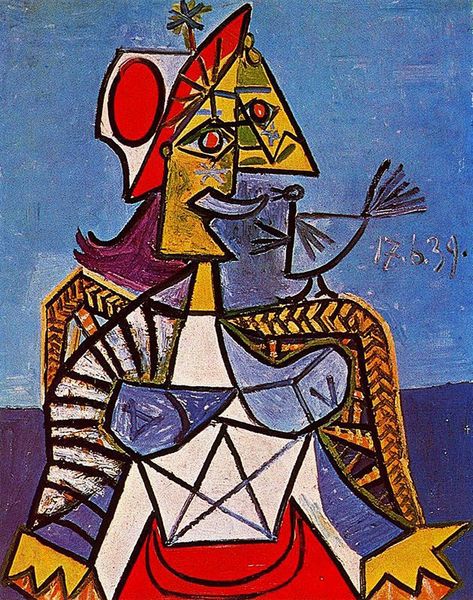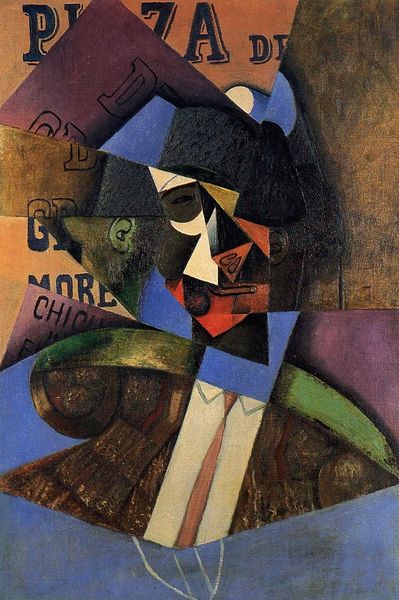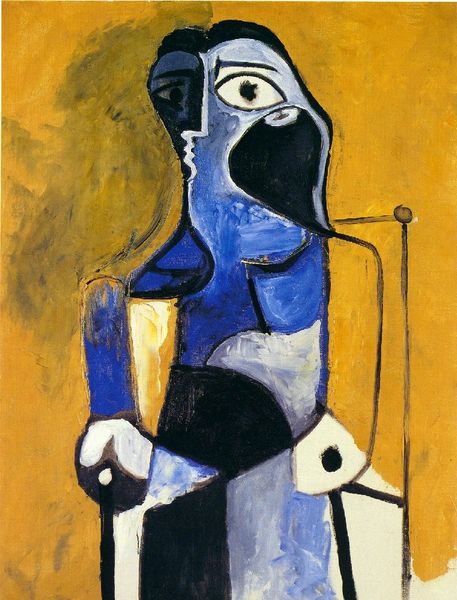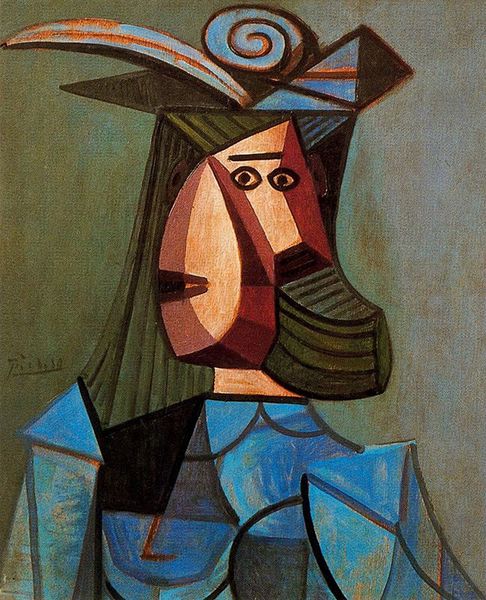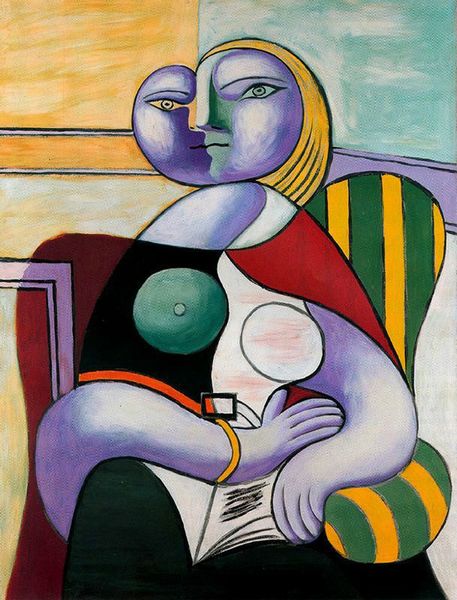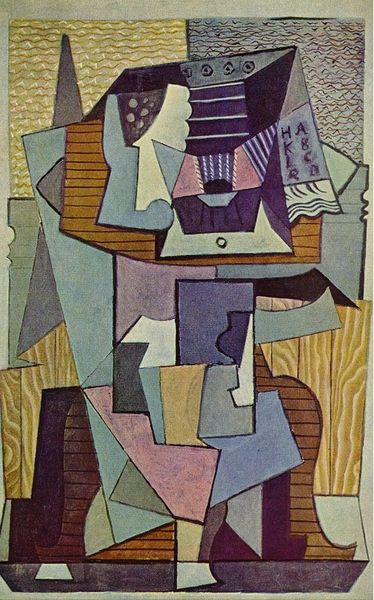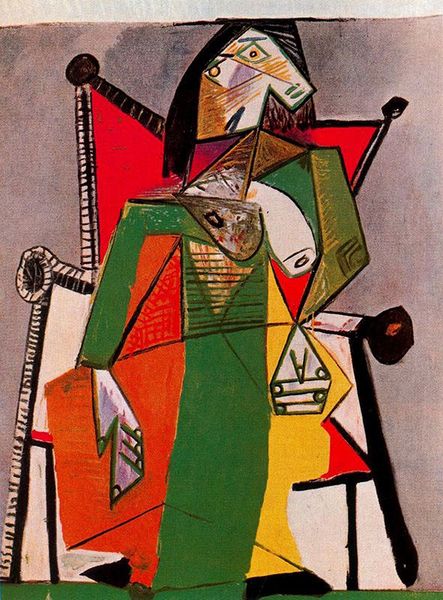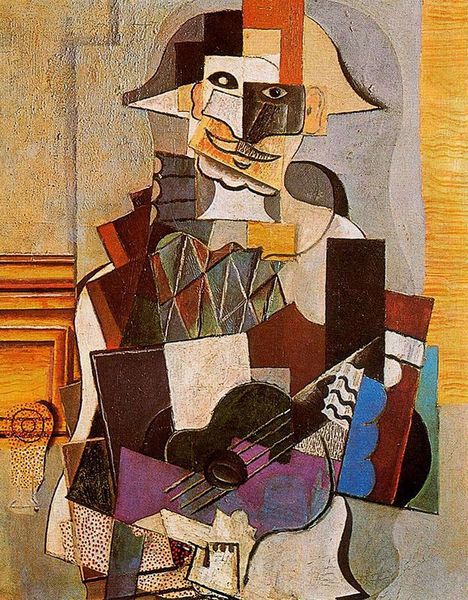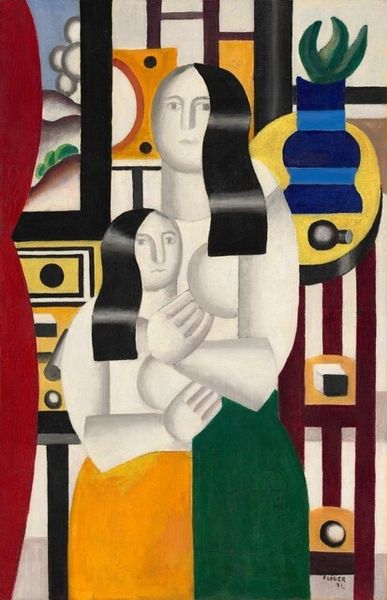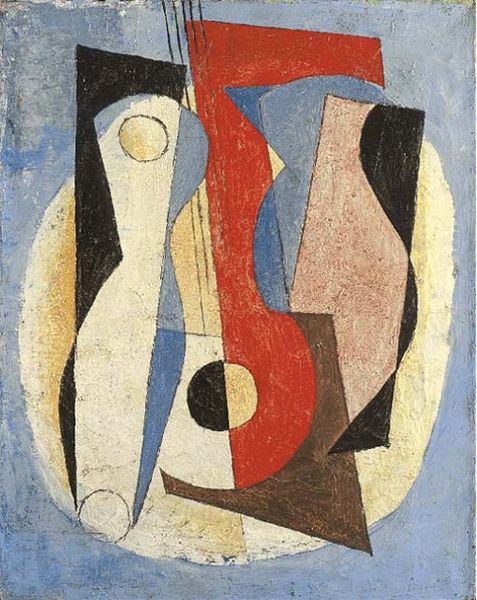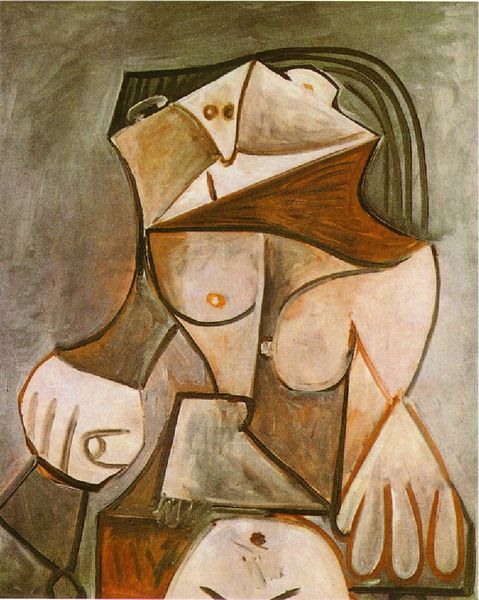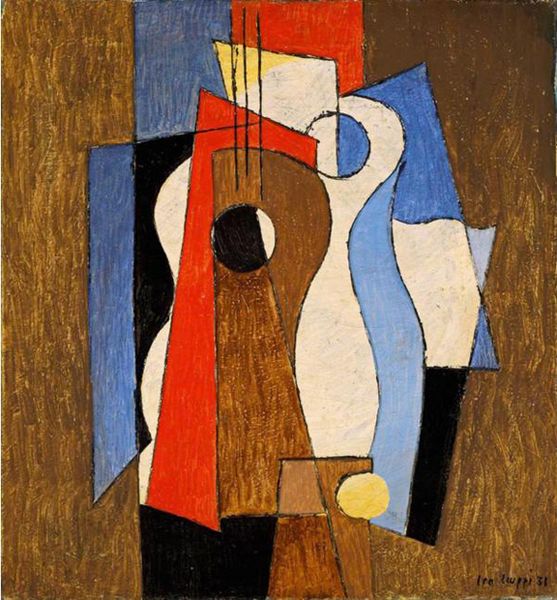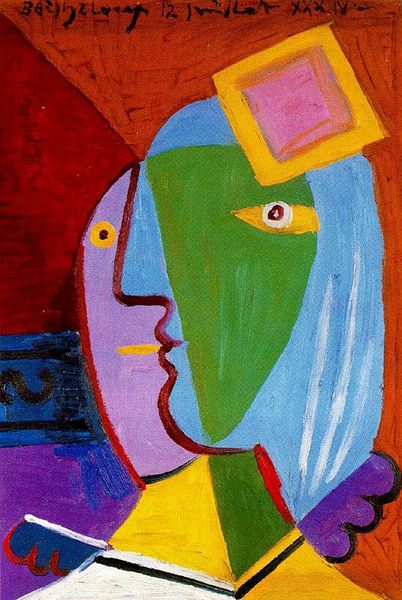
painting, oil-paint
#
portrait
#
cubism
#
painting
#
oil-paint
#
pop art
#
figuration
#
geometric
#
modernism
Copyright: Public domain US
Art Historian: Editor: So, here we have Picasso’s "The Student," from 1919. It's an oil painting, clearly in his Cubist style. It's… certainly a lot to take in at first glance. I get a kind of fragmented, almost unsettling feeling from the disjointed shapes. What's your interpretation of the work? Art Historian: As a Materialist, I'm less interested in emotional readings and more in how this image reflects the conditions of its production and reception. Consider the title. “The Student.” What were the economic and social realities facing students in post-World War I Europe, and how might Picasso be responding to that through his choice of materials and fractured composition? It almost seems as though the student is coming apart. Editor: That's an interesting point. I hadn't really thought about it beyond just a… depiction. So, you're saying the very *materials* of the painting, and Picasso’s deliberate breaking apart of form, can tell us about that social upheaval? Art Historian: Precisely. The oil paint itself – consider where those raw materials came from, the means of production, and the access Picasso, as an established artist, had to them. Then, look at the composition. Is the fragmentation purely aesthetic, or could it represent the shattering of pre-war certainties, mirrored in the labour required to put paint on the canvas, constructing this image? Are we even seeing an actual person, or an idea about "student life" broken down into saleable, consumable, parts? Editor: Wow, I never would have thought of it that way. Focusing on the social implications through the materials makes this much deeper than just some painting. Thanks, it really changes how I see art! Art Historian: Exactly. Art isn't just about individual expression; it's a product of specific social and material circumstances.
Comments
No comments
Be the first to comment and join the conversation on the ultimate creative platform.
